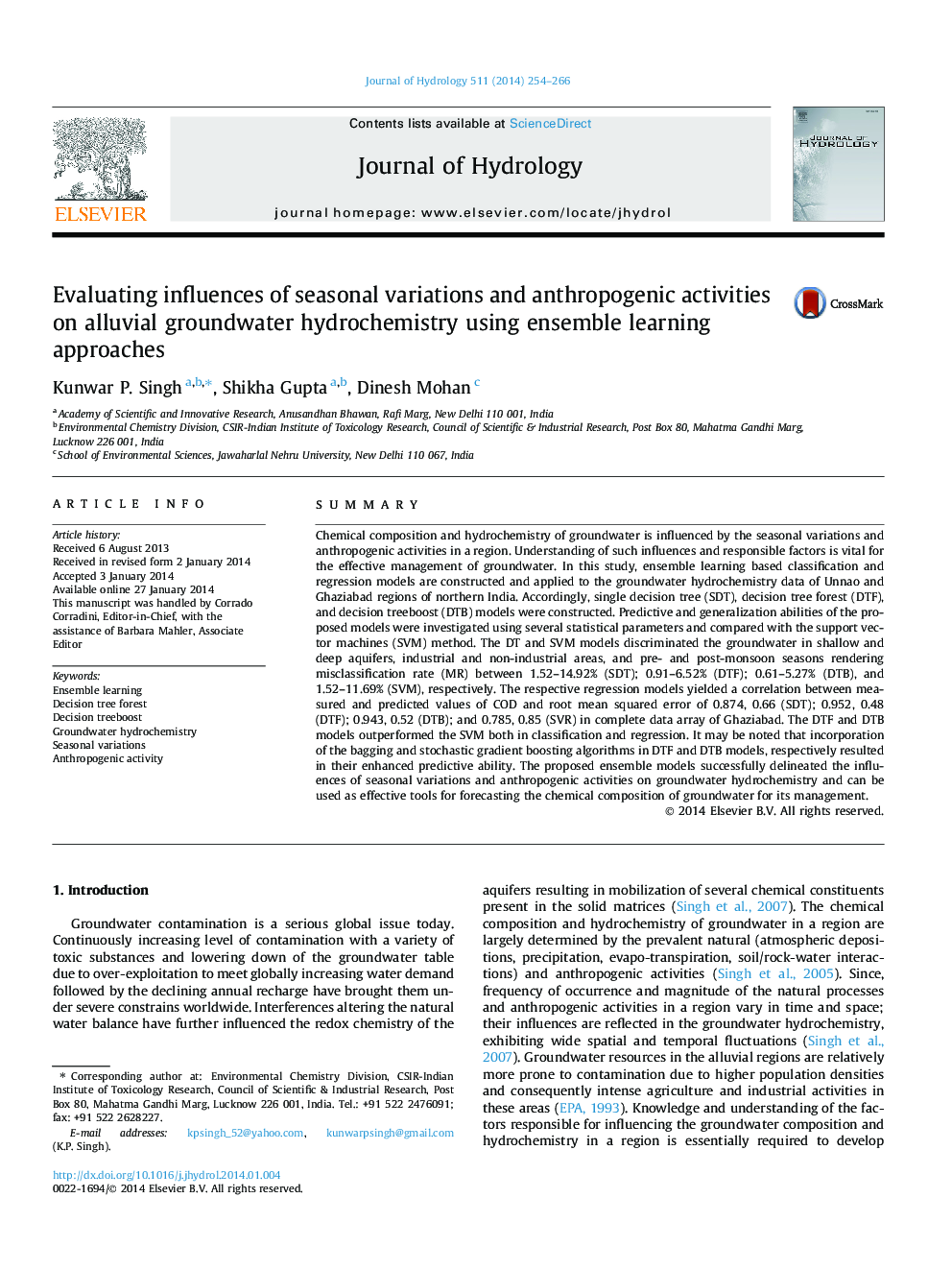| کد مقاله | کد نشریه | سال انتشار | مقاله انگلیسی | نسخه تمام متن |
|---|---|---|---|---|
| 6413289 | 1629937 | 2014 | 13 صفحه PDF | دانلود رایگان |
- Ensemble learning models (ELMs) were used to investigate groundwater hydrochemistry.
- ELMs were applied to two groundwater hydrochemistry data sets.
- ELMs successfully evaluated seasonal and anthropogenic influences on groundwater.
- ELMs had a better predictive/generalization ability than the SVMs method.
- ELMs (classification/regression) may be a useful tool in groundwater management.
SummaryChemical composition and hydrochemistry of groundwater is influenced by the seasonal variations and anthropogenic activities in a region. Understanding of such influences and responsible factors is vital for the effective management of groundwater. In this study, ensemble learning based classification and regression models are constructed and applied to the groundwater hydrochemistry data of Unnao and Ghaziabad regions of northern India. Accordingly, single decision tree (SDT), decision tree forest (DTF), and decision treeboost (DTB) models were constructed. Predictive and generalization abilities of the proposed models were investigated using several statistical parameters and compared with the support vector machines (SVM) method. The DT and SVM models discriminated the groundwater in shallow and deep aquifers, industrial and non-industrial areas, and pre- and post-monsoon seasons rendering misclassification rate (MR) between 1.52-14.92% (SDT); 0.91-6.52% (DTF); 0.61-5.27% (DTB), and 1.52-11.69% (SVM), respectively. The respective regression models yielded a correlation between measured and predicted values of COD and root mean squared error of 0.874, 0.66 (SDT); 0.952, 0.48 (DTF); 0.943, 0.52 (DTB); and 0.785, 0.85 (SVR) in complete data array of Ghaziabad. The DTF and DTB models outperformed the SVM both in classification and regression. It may be noted that incorporation of the bagging and stochastic gradient boosting algorithms in DTF and DTB models, respectively resulted in their enhanced predictive ability. The proposed ensemble models successfully delineated the influences of seasonal variations and anthropogenic activities on groundwater hydrochemistry and can be used as effective tools for forecasting the chemical composition of groundwater for its management.
Figure a and b show classification accuracies yielded by different models for groundwater of Unnao and Ghaziabad regions and suggest that the ensemble learning classification models (DTF and DTB) performed relatively better than SDT and SVM. Figure c shows correlative distribution of measured and model predicted values of COD in groundwater of Ghaziabad for complete data. It suggests that the ensemble learning regression models (DTF and DTB) performed relatively better than SDT and SVM.
Journal: Journal of Hydrology - Volume 511, 16 April 2014, Pages 254-266
